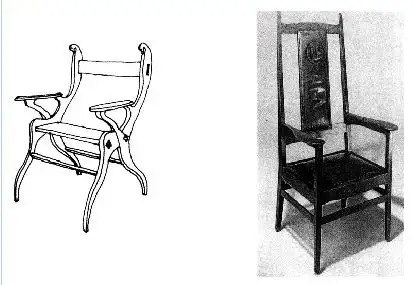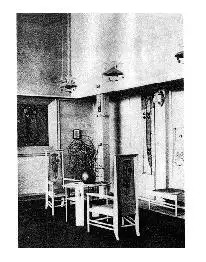British furniture a pioneer of modern design
British furniture - a pioneer of modern design
| The British were the first to start furniture design in the modern sense . This was caused by several factors: ① First of all, geographically, the reality of being isolated from the European continent made Britain less influenced by the European cultural tradition centered on France and Italy , especially the complicated decorative tradition in furniture design, after several centuries; ② More importantly, in terms of macro-culture, as the leader of Western powers for centuries, Britain has absorbed a lot of Chinese with the East, especially China . The most important one is the functionalist design concept, because Chinese seating was produced, developed and finalized based on practical needs, and functionality was the fundamental factor; ③ Britain was the first country to undergo a modern industrial revolution, and its furniture design could not but be affected; ④ At the same time, Britain was also one of the earliest countries where the middle class was the mainstream of society. Since the mid-18th century, it has continuously produced furniture designers who can influence fashion, and their design styles are often more functional, such as Chippendale (born in 1718). The three popular styles in his furniture design album: Chinese style, French style and peculiar style, had a great influence on the time and later generations. Edward William Godwin (1833-1886) was the earliest British architect . Godwin was born in Bristol and established his own design firm in 1854. His main occupation was architectural design. The International Industrial and Art Exposition in 1862 the interior decoration of the London residence for the famous writer Oscar Wilde. Godwin's furniture design was sometimes influenced by historical styles, such as simplifying ancient Egyptian furniture. But the decisive influence on it was the oriental design thought, that is, the design techniques of China and Japan , which enabled Godwin to create a group of furniture designs with elegant forms, simple shapes and clear modern meanings. Furniture designed by Godwin in 1883 Charles Francis Annesley Voysey (1857-1941) was born in Yorkshire. He received professional training from several famous architects at a very young age until he established his own architectural design office in 1882. Since 1888, under the influence of the Arts and Crafts Movement, he began to design furniture, textiles, wallpaper and metal products, and also became one of the most influential architects in the revival of British residential architecture at that time. Like Mackintosh, Voysey also emphasized the integrated design of architecture, interior and furniture. In furniture design, his full sense of integrity, simple and restrained techniques, without losing the traditional characteristics, became the main standard-bearer in the late Arts and Crafts Movement in Britain. His chair design is particularly famous. The hollowed-out "heart" image on the back panel, the unusual proportion relationship and sense of space make these chairs not only have outstanding personality, but also have an amazing visual impact, making people feel relaxed and reasonable. Chair designed by Voysey in 1897 Armchair designed in 1909 However, the architect with the greatest influence in Britain and even in Europe at the turn of the century was Charles Rennie Mackintosh (1868-1928), the core figure of the Glasgow School. This rare all-rounder made outstanding achievements in many fields, especially in architecture and furniture design. He led the latest design trends in Europe and the United States at that time, very similar to Wright in the United States. Mackintosh was born in Glasgow, and his major design works were also in this city. Mackintosh was very good at school and received professional training in several famous architectural firms. In 1890, he won the Thomson Travel Scholarship, which gave him ample opportunities to travel to Italy, France and Belgium. After returning, he and his wife and other four people cooperated to establish the famous "Four" design firm. In 1897, he won the architectural design competition for the new school building of the Glasgow School of Art, and then made this building a milestone in the history of modern construction. Its interior and furniture designs are also wonderful. The many years he spent in his hometown were the most glorious period of his career until he moved to London in 1916. In furniture design, Mackintosh created a very personal and symbolic simple and elegant formal language. This creation came from his genius combination of British local traditions, Chinese furniture traditions and Japanese design influences, which is especially reflected in his large number of chair designs. The amazing modernity in his furniture design can be cleverly combined with the strong cultural traditions, and create an overall effect that is seamlessly integrated with the architecture and interior design he designed. The use of regular geometric shapes in the design largely reflects his interest in Japanese decorative art and architectural forms. In almost all of his interior designs, chairs and other furniture are also entities that define and divide space. The high backrests of many chairs actually serve as indoor screens. Most of Mackintosh's furniture was specially created for the interior spaces he designed, because the furniture market at that time could not find furniture suitable for his architectural interiors, but many of them have become classics and artistic embellishments for later generations, and are still being produced in a certain number of quantities. Mackintosh's furniture design displayed at the International Decorative Arts Exposition in Turin, Italy in 1902    |